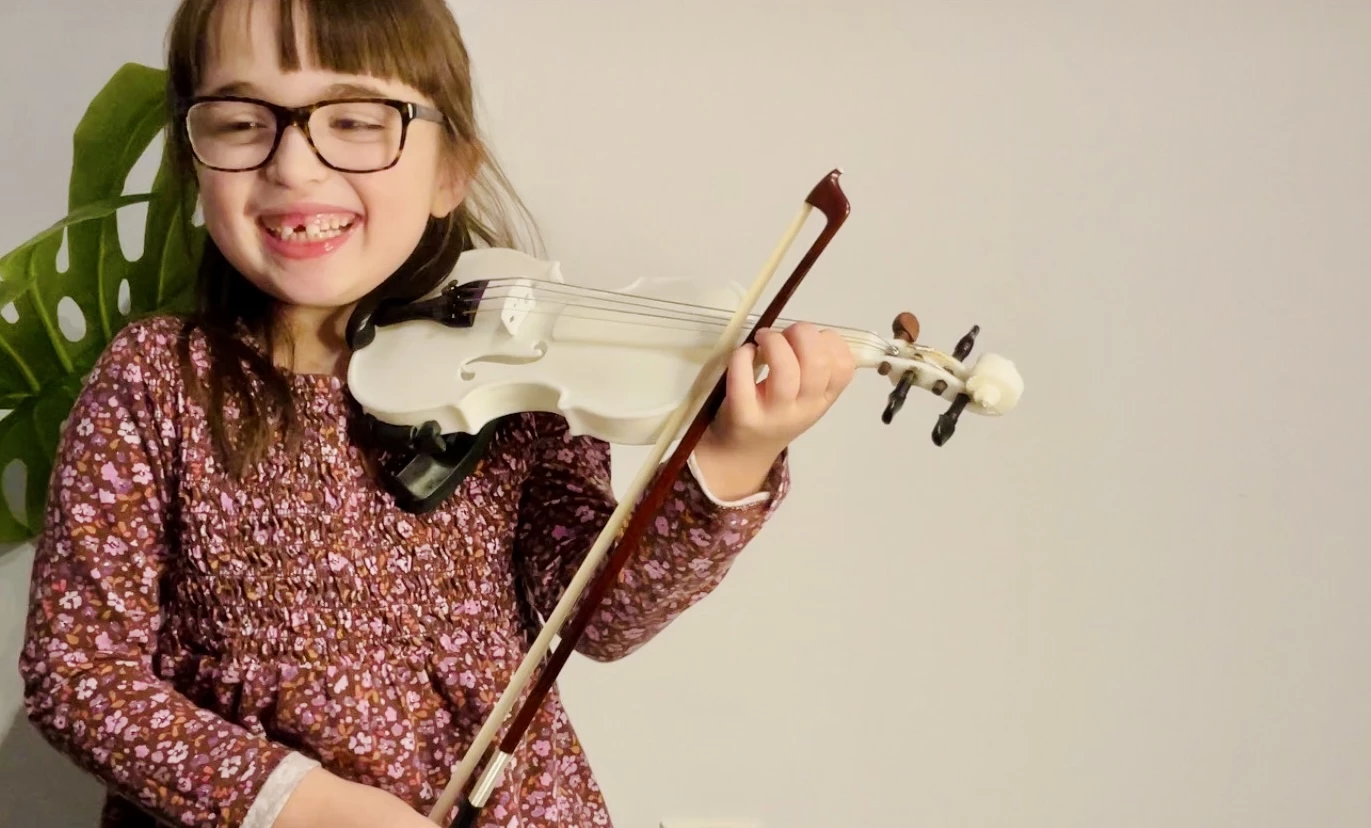It's ironic that while violins are popular instruments for children to learn to play, they can also be very pricey. The Montreal-based AVIVA Young Artists Program has set out to change that, by developing an inexpensive yet nice-sounding 3D-printed violin.
Although "budget" violins for children do already exist, reasonable-quality models are typically priced in the hundreds to thousands of dollars. By contrast, AVIVA's 3D-printed violin should reportedly set makers back approximately US$34 – that's $7 in printing costs, and about $27 to get the thing fully assembled.
The latter process involves purchasing and installing third-party non-3D-printed parts such as the strings, chin rest, tail piece and tuning pegs. AVIVA Young Artists Program director Mary-Elizabeth Brown tells us that buying such components wholesale makes more sense than printing them all out for each build, plus it allows for a higher level of customization for each student.

Shaped much like that of a traditional violin, the main body of the instrument is printed out of PLA (polylactic acid) polymer. A series of square cavities inside of it help to both reduce weight and produce a resonant tone. The separately printed neck – which simply gets clipped onto the body – is made of smoother ABS (acrylonitrile butadiene styrene) plastic, allowing it to sit comfortably in the student's hands.
Once it's all put together, the instrument is said to produce a sound that's darker and more mellow than that of a regular violin. As an added bonus, the AVIVA violin is also less fragile than its traditional wooden cousins.

Ultimately, the aim of the project is to get violins to individual children or music programs that couldn't otherwise afford them. The method of distribution has yet to be decided – it could involve shipping fully printed violins, sharing the 3D-printing files with makers, or a combination of both. Whatever the case, interested parties can register for updates via the Print-A-Violin website.
Brown presented her team's work this Tuesday, at the 183rd Meeting of the Acoustical Society of America.
"Our goals were to explore the new sound world created by using new materials, to leverage the new technology being used in other disciplines, and to make music education sustainable and accessible through the printing of more durable instruments," she says. "The next step is to explore design modifications as well as efforts to lower the costs of production while making such instruments more widely available, especially in the realm of education."
You can see and hear an adult-size version of the AVIVA violin being played in the video below. And no, it isn't the first 3D-printed violin we've seen. University of Texas student Sean Riley created one of his own, plus the Modular Fiddle can either be user-printed or purchased ready-to-play for $550.
Sources: AVIVA Young Artists Program, Acoustical Society of America via EurekAlert




